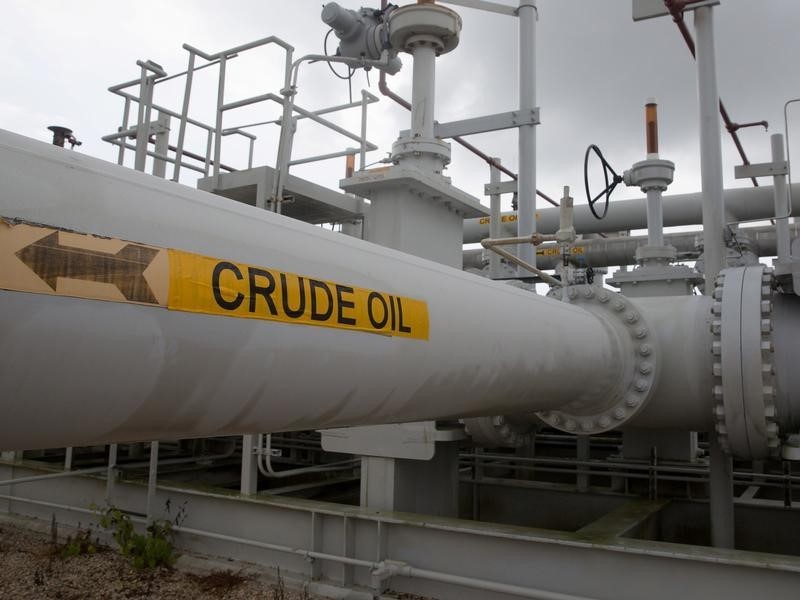
© Reuters.
LCO
-1.47%
Add to/Remove from Watchlist
Add to Watchlist
Add Position
Position added successfully to:
Please name your holdings portfolio
Type:
BUY
SELL
Date:
Amount:
Price
Point Value:
Leverage:
1:1
1:10
1:25
1:50
1:100
1:200
1:400
1:500
1:1000
Commission:
Create New Watchlist
Create
Create a new holdings portfolio
Add
Create
+ Add another position
Close
CL
-1.57%
Add to/Remove from Watchlist
Add to Watchlist
Add Position
Position added successfully to:
Please name your holdings portfolio
Type:
BUY
SELL
Date:
Amount:
Price
Point Value:
Leverage:
1:1
1:10
1:25
1:50
1:100
1:200
1:400
1:500
1:1000
Commission:
Create New Watchlist
Create
Create a new holdings portfolio
Add
Create
+ Add another position
Close
RDSa
-0.11%
Add to/Remove from Watchlist
Add to Watchlist
Add Position
Position added successfully to:
Please name your holdings portfolio
Type:
BUY
SELL
Date:
Amount:
Price
Point Value:
Leverage:
1:1
1:10
1:25
1:50
1:100
1:200
1:400
1:500
1:1000
Commission:
Create New Watchlist
Create
Create a new holdings portfolio
Add
Create
+ Add another position
Close
DXY
+0.05%
Add to/Remove from Watchlist
Add to Watchlist
Add Position
Position added successfully to:
Please name your holdings portfolio
Type:
BUY
SELL
Date:
Amount:
Price
Point Value:
Leverage:
1:1
1:10
1:25
1:50
1:100
1:200
1:400
1:500
1:1000
Commission:
Create New Watchlist
Create
Create a new holdings portfolio
Add
Create
+ Add another position
Close
Investing.com — Crude oil prices edged lower Friday but remained on course for hefty weekly gains on the back of disrupted global supplies, hopes for higher U.S. demand and a weaker dollar.
By 09:20 ET (13.20 GMT), the U.S. crude futures traded 0.5% lower at $76.54 a barrel, while the Brent contract dropped 0.4% to $81.00.
Both benchmarks are on course to register gains of around 4% this week, with the Brent contract climbing above $81 a barrel, at its highest level since late April.
Disrupted supplies from Libya, Nigeria
The market received a boost on Thursday with the news that political protests had shut down some oilfields in Libya, while Shell (LON:RDSa) suspended loadings of Nigerian oil owing to a potential leak at a terminal.
These two disruptions, when added together, are likely to have impacted the supply of around 600,000 barrels per day, and come in the wake of the Saudi one-million-barrel cut to the end of August and Russia’s 500,000 barrel export reduction.
“Combined, these disruptions are significant and will be felt in a market that is already set to tighten,” said analysts at ING, in a note.
Optimism over U.S. economic activity
That said, the majority of the week’s gains followed the release of the softest U.S. inflation growth in more than two years.
This eased worries that the aggressive rate hiking-cycling by the Federal Reserve would continue for longer than July’s expected increase, potentially pushing the largest economy in the world into recession in the second half of the year.
This also resulted in the U.S. dollar slumping to 15-month lows, making commodities denominated in dollars, like crude, cheaper for foreign buyers.
Additionally, demand for power in Texas hit a record high for a second day in a row on Thursday as homes and businesses kept air conditioners working full time during a lingering heat wave.
The Electric Reliability Council of Texas said it expected usage will set another record on Friday.
Positive monthly energy reports
Further price support came from Thursday’s reports by the International Energy Agency and Organization of the Petroleum Exporting Countries, with both predicting that oil demand will pick up in the second half of the year, particularly in China.
Source: Investing.com



























